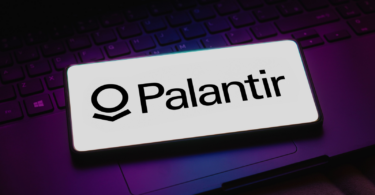Missed out on crypto $? Here's good news
Sponsored
Hello. I'm James Altucher. If you watched from the sidelines… As thousands of snot-nosed tech geeks got rich on crypto… I have a very important prediction today. You worked hard all your life… Provided for your family… Paid your taxes… Did everything you were supposed to do… Then missed out on padding your retirement accounts… By getting in early on a game-changing technology. Did you just get a second chance? Please, don't miss out this time. Between now and March 8, 2024… An event will happen in our country… That will make the “crypto boom” seem like a ripple on a pond… In comparison… This “second chance” opportunity to get in on a brand-new technology… Will create a tidal wave of new wealth… For those who know where to look. It could be you. All the details you need are right here.
P.S. If you missed out on crypto, this could be your second chance. A brief “wealth window” is opening now, but you must get in before March 8, 2024. Don't delay. See all the details you need here.
For the worlds of finance and tech, Nvidia is now widely viewed an historic pioneer whose time has come, a colossus bound to dominate the artificial intelligence revolution en route to lifting the productivity and profitability of businesses worldwide to new heights. That’s the message underscored by the astounding liftoff that on February 22, following its big-time earnings beat, boosted its market cap in a single day by 16% or $270 billion, and by mid-morning on February 23, added another 2% to hike its valuation to over $2 trillion.
Amidst the widespread drumbeat of praise, skeptical voices are few. But we’ve heard many times before that the first mover in a change-the-world thrust forward will maintain its top position far into the future, only to witness the shooting stars get smothered by disruptors lured by the leader’s rich profitability, and the industry’s immense promise. So to get a perspective on the likelihood that Nvidia likely faces that fate, I asked two veterans who’ve seen super-hot innovators rise and fall to provide their take to Fortune.
I put the question first to an expert who spans the worlds of academic finance and capital markets. Rob Arnott is founder and chairman of Research Affiliates, a firm that oversees investment strategies for $139 billion in mutual funds and ETFs. Arnott, alongside RA’s CEO Chris Brightman, personally manages Pimco’s $13 billion All Asset Fund. He’s the father of “fundamental indexing,” an approach that weights companies in a portfolio by sales, net worth and other metrics measuring their size in the economy rather than by market cap, so that investors aren’t trapped into putting more and more of their savings into the most expensive stocks. Arnott, who also served as editor-in-chief of the Financial Analysts Journal, oversees a group of PhDs at RA who conduct groundbreaking research, and consults regularly with the top minds at universities and business schools on ideas to refine RA’s playbook.
Nvidia’s stock price forecast
In an email to Fortune, Arnott notes that the notion underpinning Nvidia’s rise, that a single or even a couple of trailblazers that initially rule a new technology will maintain overwhelming leadership and deserve epic valuations, is another in a long series of “big market delusions.” He says that today’s situation mirrors the early days in everything from hand-held devices to personal computers to eCommerce to laying pipes for The Internet. The AI frenzy, he declares, recalls such crazes as “the dot.com bubble in 1999 and EVs in 2021.”
For Arnott, when apparent breakthroughs first appeared and attracted strong investor backing you could usually count on three things: “First, an exciting new industry is taking shape. Second, it will show impressive growth in the years ahead and probably change the world. Third, at the start, there’s a handful of companies dominating this exciting new landscape.”
So in most cases, the promise eventually paid off. But that doesn’t mean those who led the way greatly profited over the years ahead. “It was usually not true that first, the new technology brought on change nearly as rapid as the markets predicted,” he says. “And second, it was often not true that these will be the dominant players 5 or 10 or even 20 years in the future.” Most of all, he adds, it’s wrong to think that “We can pay any price because these companies can achieve stupendous profits in due course. That’s usually not true.”
Arnott describes the herd mentality that’s so swelled Nvidia’s stock price as “the classic nature of bubbles. Disruptors change the world in wonderful ways, but they cannot succeed unless their customers are succeeding even more than they are, and disruptors are often themselves disrupted.” He points to Palm, dominant in handheld technology in 2000 losing out to BlackBerry in 2003, then BlackBerry losing to Apple’s iPhone in 2008. Arnott’s point is that competition eventually drives down a new industry’s initially sterling profitability. The biggest beneficiaries are the customers that bank big productivity gains from advances in software or online advertising algorithms, and the sectors’ enduring champs are the players that keep innovating so that their products help customers work faster, better and cheaper.
Arnott agrees that fast-growers such as Nvidia deserve “premium valuations.” But he argues that Nvidia’s market cap is far, far too high versus the dollars it now generates in earnings. In his view, the risk Nvidia will follow so many others that have fallen from glory is much too great to justify its current PE (now at nearly 70). “Nvidia’s priced for perfection,” he says. “Its valuation leaves no room for shocks. Never short-sell bubble stocks when they’re on a roll. But you don’t have to own them, either.”
Top accountant Jack Ciesielski has seen too many early leaders fail to rate Nvidia a sure thing
Jack Ciesielski, former author of the Analyst’s Accounting Observer, has long been one of the most astute commentators on trends in the financial markets. And he agrees with Arnott that the same forces that hammered the early winners in other great leaps forward could well stymie Nvidia. “Remember what happened in word processing and early PCs,” he says. “First, you had the likes of WordPerfect, Ami Pro and Lotus, along with Commodore, Radio Shack and Eagle. But they lost, and the prizes went to Apple and Microsoft. It was the same in the early days of the internet. The companies that laid the cable such as UUNET and Lucent got big valuations, and are no longer with us. But those that thrived turned out to be the Amazons, Googles and companies that used the pipes.”
Ciesielski observes that, “It’s not the first movers who usually win, it’s the second movers” who follow on with better strategies for winning customers and hatching the best new products. Plus, Nvidia is far from alone right now in minting AI software. Today, AMD and Intel are rolling out their own AI chips. As Arnott and Ciesielski both note, Nvidia’s created a rage that all the software giants want ardently to join. Its takeoff is luring a herd of competitors set on winning their places as the princes or kings of AI. By attracting an onslaught, Nvidia’s sorcerous success may be planting the seeds of its decline.
Sam Altman's Secret Plan to Take Down NVIDIA
Sponsored
A huge bombshell has emerged in the OpenAI saga with CEO Sam Altman… OpenAI, the startup behind ChatGPT, recently witnessed a whirlwind of events surrounding Altman. In just five short days, he was dismissed by the board, hired by Microsoft, and then reinstated as the head of OpenAI. However, Bloomberg reports that prior to his departure from OpenAI, Altman was actively seeking to secure billions in funding for a brand new startup company… A secretive venture codenamed “Project Tigris.” “Project Tigris” is NOT focused on developing a new app or another version of ChatGPT. Its mission, spearheaded by Altman, revolves around the creation of a chip company… One that's poised to rival Nvidia, the chipmaker now worth over $1 trillion thanks to the AI boom. You see, Nvidia's chips were originally designed to serve just one purpose… To create ultra-realistic graphics in games such as Call of Duty and Counter-Strike. In other words… Nvidia's technology was never meant to power AI. Sam Altman's vision involves producing chips specifically designed to handle high-volume AI workloads. And are also cheaper than Nvidia's. In short, this was Sam Altman's Plan to Take Down Nvidia… However, what many investors might not be aware of is the emergence of a little-known company poised to achieve what Altman could not… This firm has beaten Altman to the punch with a patent-protected chip specifically designed to run AI on. This makes it much more powerful than Nvidia's tech, which was originally designed for video gaming. This chip boasts a 100x performance boost. The U.S. Air Force, Cisco, and Raytheon are just some of this firm's early elite clients. But soon this chip will be available to the mainstream… And if you position yourself before it reaches the mass market, you could turn every $1 into $120… Just like early Nvidia investors did. I just published an urgent presentation on this unique opportunity. Inside, I'll explain all the details and how you can position yourself today. Get the full story here while there's still time.







